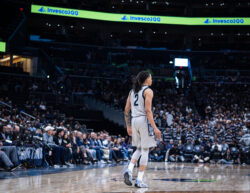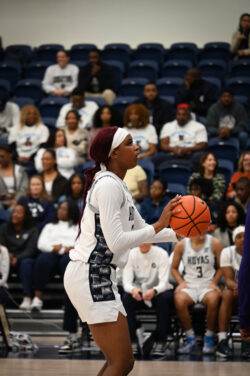Months of thinking, weeks of planning, and days of finalizing—all were nearly ruined by a fire drill.
Tuesday evening, Harbin Hall’s fire alarm bleated its ominous tone at approximately 6:10 p.m.—five minutes before the start of my fantasy baseball draft. Dejected, I sauntered down to the Harbin patio and waited for the “OK” to scramble back into the building.
To some, fantasy baseball may seem like a waste of time, but it’s actually the most engaging sport for those of us who can’t play real baseball. While critics refer to the last 20 or so years as baseball’s steroid era, it might just as easily be dubbed the fantasy era.
I participate in a league called Colt Wars. The moniker is a combination of my high school’s mascot—the Colts—and the most famous fantasy baseball league in the world, Tout Wars. The league uses only American League players and is scored on the traditional fantasy format that awards points based on the ten traditional pitching and hitting statistical categories: wins, ERA, WHIP, saves, and strikeouts, batting average, RBIs, runs, stolen bases, and home runs.
Now, my mother probably won’t like to hear this, but I spent more time studying for the draft than I have for any test in my entire life. After all, what’s more important: knowing the backup catcher of the Kansas City Royals in 2009 (John Buck), or knowing how to properly conjugate a third-person subjunctive verb in Spanish? For me, the answer is clear.
So, for the last three weeks, I have scoured the depth charts of all 14 American League teams and learned each player’s projected stats for the upcoming 2009 season. I know what you’re thinking—I’m a nerd.
However, I share this obsession with the six to seven million fantasy junkies who will watch every pitch, at-bat, and inning for the upcoming 162 game season with the utmost concern and attention. I may be a nerd, but I have a whole army behind me, armed with maple bats and leather balls (at least figuratively).
But not everything about fantasy baseball is great. The virtual sport has wedged itself into the very fabric of America’s pastime and has become engrained into hardball’s fandom, often serving as a substitute for actual fandom. Many fans no longer root for teams as a whole. Instead, they root for a clique of unrelated players that changes every season, which is not how baseball was meant to be enjoyed.
Come October, when the ballpark lights shine their brightest on the sport’s biggest names, fantasy junkies are already done for the season, celebrating a fantasy league championship somewhere warm like the Bahamas, or just an office cubicle.
Still, in actuality, the best part of the season begins then. The legends of fall are carved by postseason diamonds, and some of the baseball’s greatest moments—like Schilling’s bloody sock, Gibson’s gimpy home run, and John Smoltz and Jack Morris’ 1991 World Series Game 7 pitching duel—have all come within the fantasy baseball era. And those events are best appreciated by true fans of the sport, not just number-addicts playing a game from April through September.
I made sure Colts Wars would be an American League-only game because I am a fan of the New York Mets—a National League team—and I do not want to have a conflict of interest between fantasy and real baseball. These are universes that should remain separate.
So as I waited for the fire drill to let me back in my building, I knew, somewhere deep down, that while I had poured my heart and soul into this draft, none of it would matter in October. But at least it will help me get through April to September—even if it is just fantasy.




